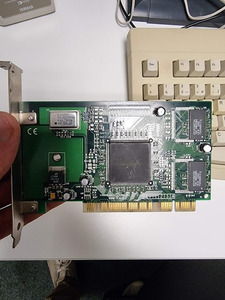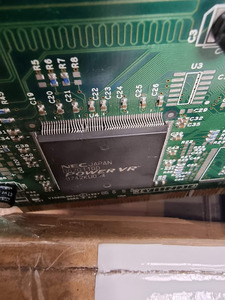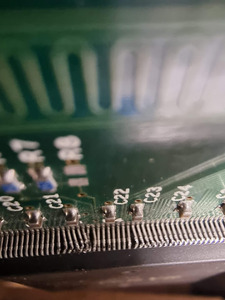First post, by JustJulião
- Rank
- Member
Hi,
It's my first post here.
I'm an engineer from Portugal. I'm working for a company which has a HUGE forgotten stock of old hardware. I use some of my free time to make it alive again and play on it.
A while ago, I came accross a PowerVR PCX2.
I know this card is rare and exciting for technical reasons, but this one is even rarer because it appears to be a Videologic model, not the "common" Matrox one.
Problem is, this poor thing has been poorly stored in a box with many bulk VGA cards and is now damaged :
I tested it, in an "all or nothing" move. Surprisingly, it's """working""". Textures appear to be replaced with rainbows but geometry seemed surprisingly correct.
Of course, the simple fact it shows something positively surprised me but what if it could be any better ?
First, since I never used a PowerVR 1 card before, and saw it was sometimes tricky to make it work, maybe I can test it on a more compatible system.
I tested it on a DFI K6BV3+ (Via MVP3 chipset) with latest bios flashed.
The 2D card is a late 6326 (Diamond Speedster).
Does this system have any reason to show bad results with a PowerVR card ?
Should I test it on another one ?
Should I test it with other drivers ? I tested Videologic's last ones.
I think I might refrain trying too hard considering its condition though.
Second, how to repair it ? Do you think it could be repaired with some professional care ? I have basic soldering skills but I never soldered something this complex and I don't have the appropriate iron anyways.
Thanks !


